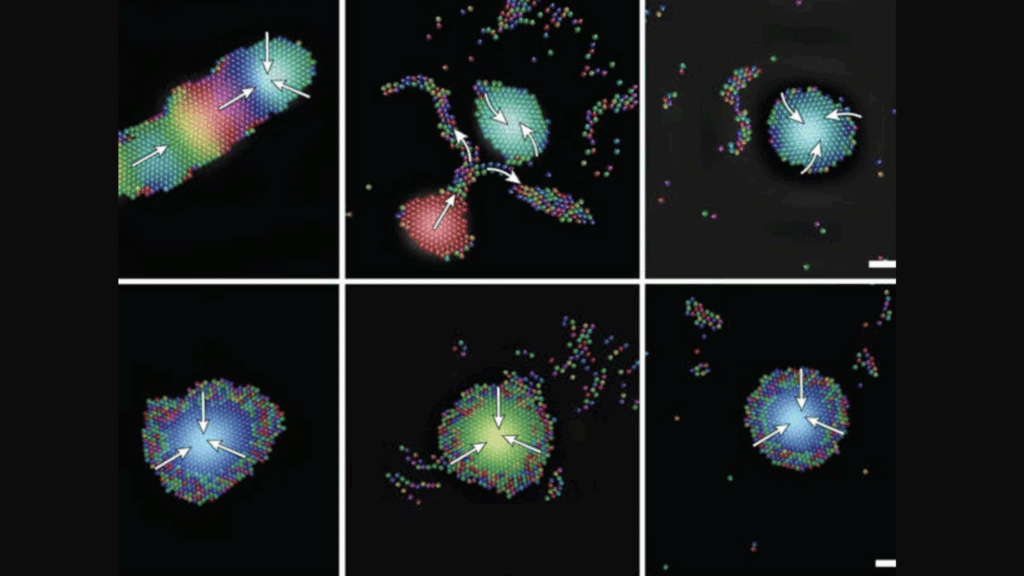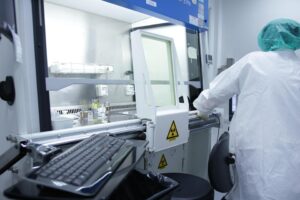
In a groundbreaking development that draws inspiration from nature, researchers worldwide have engineered micro-robots capable of using sound waves to coordinate their movements, akin to swarms of bees or flocks of birds. This innovative approach, as reported by various media outlets, holds promise for ushering in a new era of microrobots that can tackle complex tasks such as environmental cleanup, disaster relief, and targeted drug delivery within the human body.
The study, published in the journal Physical Review X, showcases how these micromachines can autonomously organize and adapt to their surroundings without the need for intricate programming. This advancement marks a significant leap forward in the field of active matter, which explores the collective behavior of self-propelled microscopic particles, both biological and artificial.
A Smart Swarm of Tiny Robots
Leading the research, Penn State professor Igor Aronson compared the robots to swarms of midges or bees, which use the sound of their flight to maintain cohesion. “They translate, that makes noise, and the noise keeps them together, a lot of people doing as one,” Aronson explained. The study utilized microscopic robots equipped with an acoustic detector and emitter, modeled through computer simulations.
These fundamental agents are designed with a motor, a tiny microphone, a speaker, and an oscillator, allowing them to move directionally and communicate acoustically. Despite their simplicity, Aronson asserts that they are “capable of collective intelligence.” The robots synchronize their internal oscillators to the acoustic field frequency of the swarm, gravitating towards the strongest signal. This basic form of acoustic communication enables the devices to operate in unison, much like a school of fish or a flock of birds.
Implications for Active Matter Research
The ability of these robot swarms to navigate through small openings and reform if dispersed—a property Aronson refers to as “self-healing”—represents a significant breakthrough for the nascent field of active matter. Historically, active matter particles were primarily manipulated using chemical signaling. However, Aronson highlights the advantages of sound waves, noting that they “travel faster and farther almost without energy loss—and the design is much simpler.”
According to Aronson, the robots effectively “hear” and “seek” each other, facilitating collective self-organization from simple components. This research is pivotal for designing the next generation of microrobots, which could potentially address some of the world’s most pressing challenges.
Future Prospects and Challenges
As the research progresses, the potential applications for these microrobots are vast. In environmental contexts, they could be deployed to clean up oil spills or other pollutants. In healthcare, they might navigate the human body to deliver medication precisely where it is needed, minimizing side effects and improving efficacy. Additionally, in disaster-stricken areas, these robots could assist in search and rescue operations by reaching places inaccessible to humans.
However, the path to widespread application is not without challenges. Ensuring the stability and reliability of these swarms in diverse environments remains a critical hurdle. Furthermore, ethical considerations regarding the deployment of autonomous microrobots, especially in sensitive areas like healthcare, will need careful deliberation.
Despite these challenges, Aronson remains optimistic about the future. He describes the study’s results as “crucial for designing the next generation of microrobots,” emphasizing their potential to solve significant global issues.
As researchers continue to refine this technology, the world watches with anticipation, eager to see how these tiny, sound-driven machines might reshape our approach to some of humanity’s most daunting problems.






